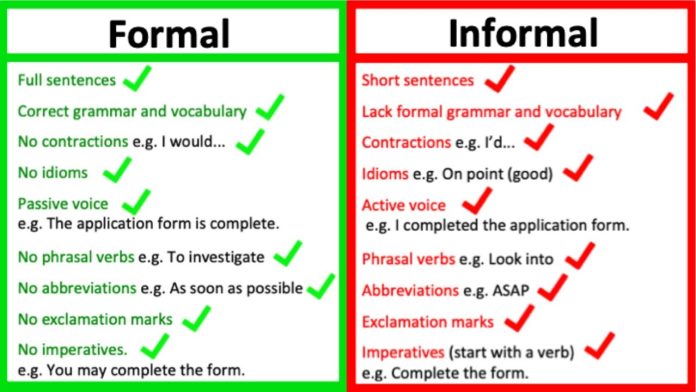Formal VS Informal: Understanding Key Differences and Uses
Choosing between formal and informal communication is essential for effective expression. Both styles serve different purposes and audiences. Knowing when and how to use them enhances clarity and engagement.
What Is Formal Communication?
Formal communication is all about using polite and professional language, especially in serious or official situations. It steers clear of slang, contractions, and personal pronouns like “I” or “you.” You’ll often find this style in academic papers, business letters, legal documents, and official speeches. The sentences are usually longer and more complex, aiming to convey respect and precision.
What Is Informal Communication?
Informal communication, on the other hand, is much more casual and conversational. It embraces slang, contractions, and first- or second-person pronouns. People typically use this style in texts, emails to friends, social media posts, or chats with family. The sentences tend to be shorter, more direct, and often carry a friendly or emotional tone.
Key Differences Between Formal and Informal Communication:
| Aspect | Formal | Informal |
|---|---|---|
| Language | Polite, clear, and professional | Casual, relaxed, and conversational |
| Sentence Structure | Complex, full sentences | Simple, fragmented sentences |
| Use of Pronouns | Third person or passive voice | First and second person |
| Tone | Respectful, objective, and serious | Personal, emotional, and friendly |
| Vocabulary | Advanced, precise, avoids slang | Everyday words, idioms, and slang |
| Contractions | Avoided | Commonly used |
When to Use Formal Communication:
Formal language is best reserved for work or academic settings. Whether you’re writing reports, proposals, or letters to people you don’t know, keeping it formal is key. It not only reflects professionalism but also helps establish your credibility. You’ll find that formal communication is particularly important during official events or legal matters.
When to Use Informal Communication:
On the flip side, an informal style is perfect for chatting with friends and family. It shines in personal emails, texts, or social media posts. Using informal language fosters a sense of closeness and warmth. It’s great for storytelling, casual conversations, or sharing friendly advice.
Tips for Switching Between Styles:
- Consider your audience and purpose before choosing a style.
- Use formal language when unsure about your reader.
- Adjust tone and vocabulary according to the setting.
- Practice blending styles for semi-formal situations, like newsletters.
- Read examples of both styles to improve understanding.
Conclusion:
Formal and informal communication have distinct roles in everyday life. Formal language ensures respect and clarity in serious contexts. Informal language builds connection and ease in personal interactions. Mastering both helps you communicate effectively with diverse audiences.

